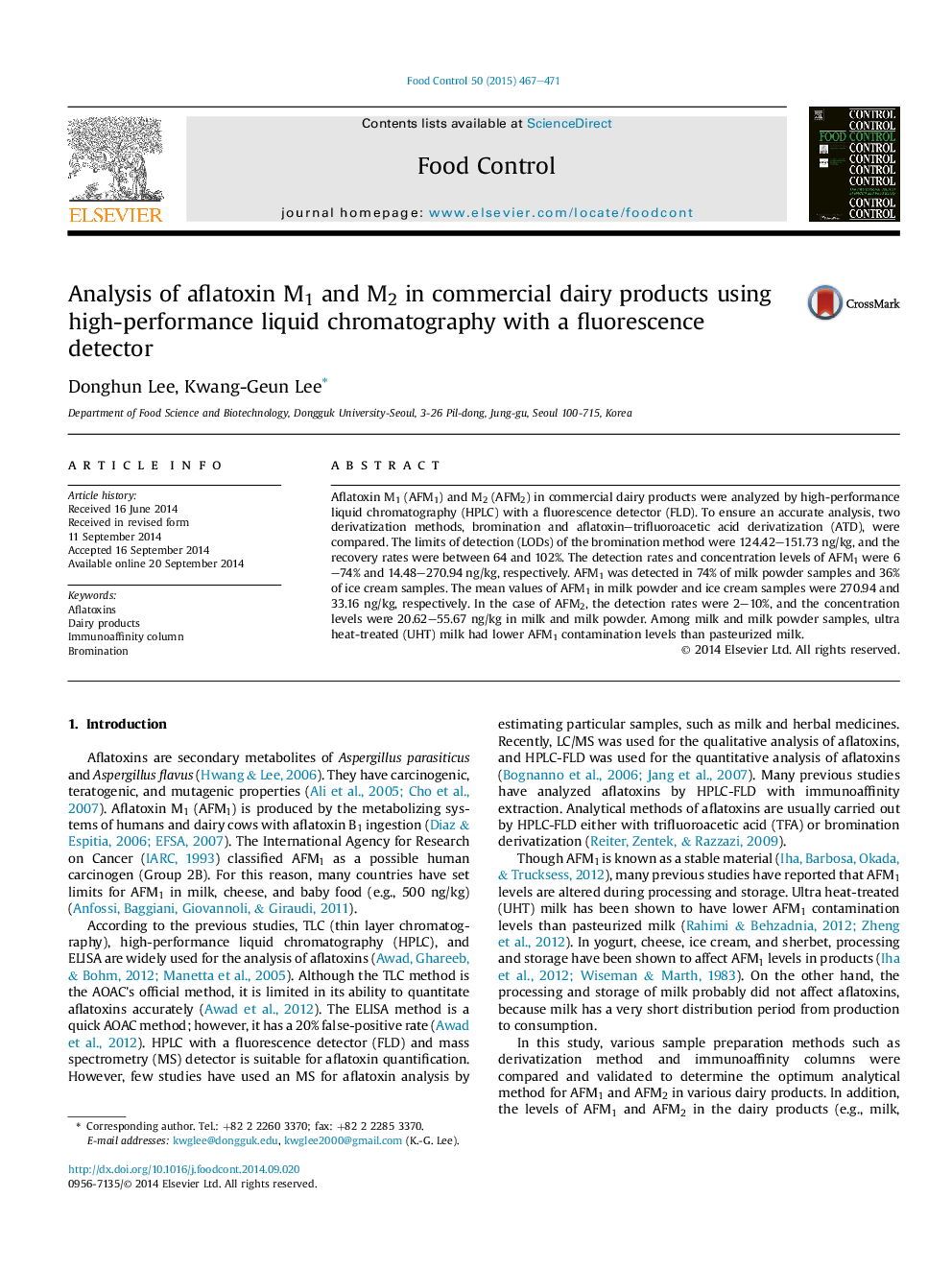| Article ID | Journal | Published Year | Pages | File Type |
|---|---|---|---|---|
| 6391059 | Food Control | 2015 | 5 Pages |
â¢Aflatoxin M1 (AFM1) and M2 (AFM2) in commercial dairy products were analyzed.â¢Two derivatization methods were compared.â¢The optimized analytical method was validated.â¢The detection rates of AFM1 in the dairy products were 6-74%.
Aflatoxin M1 (AFM1) and M2 (AFM2) in commercial dairy products were analyzed by high-performance liquid chromatography (HPLC) with a fluorescence detector (FLD). To ensure an accurate analysis, two derivatization methods, bromination and aflatoxin-trifluoroacetic acid derivatization (ATD), were compared. The limits of detection (LODs) of the bromination method were 124.42-151.73Â ng/kg, and the recovery rates were between 64 and 102%. The detection rates and concentration levels of AFM1 were 6-74% and 14.48-270.94Â ng/kg, respectively. AFM1 was detected in 74% of milk powder samples and 36% of ice cream samples. The mean values of AFM1 in milk powder and ice cream samples were 270.94 and 33.16Â ng/kg, respectively. In the case of AFM2, the detection rates were 2-10%, and the concentration levels were 20.62-55.67Â ng/kg in milk and milk powder. Among milk and milk powder samples, ultra heat-treated (UHT) milk had lower AFM1 contamination levels than pasteurized milk.
